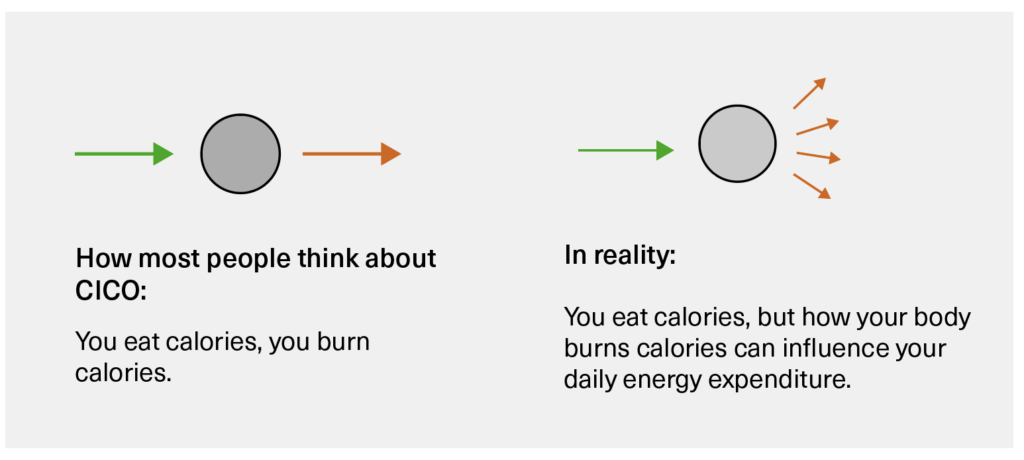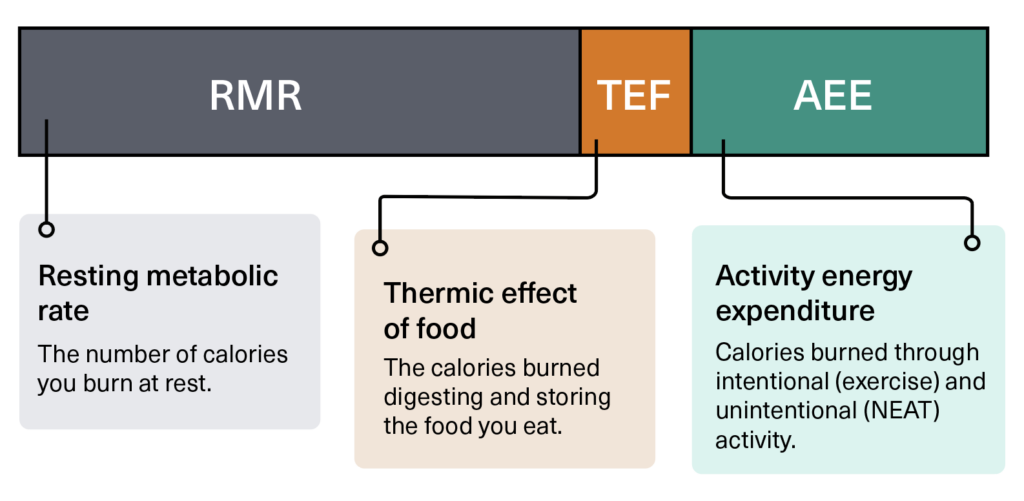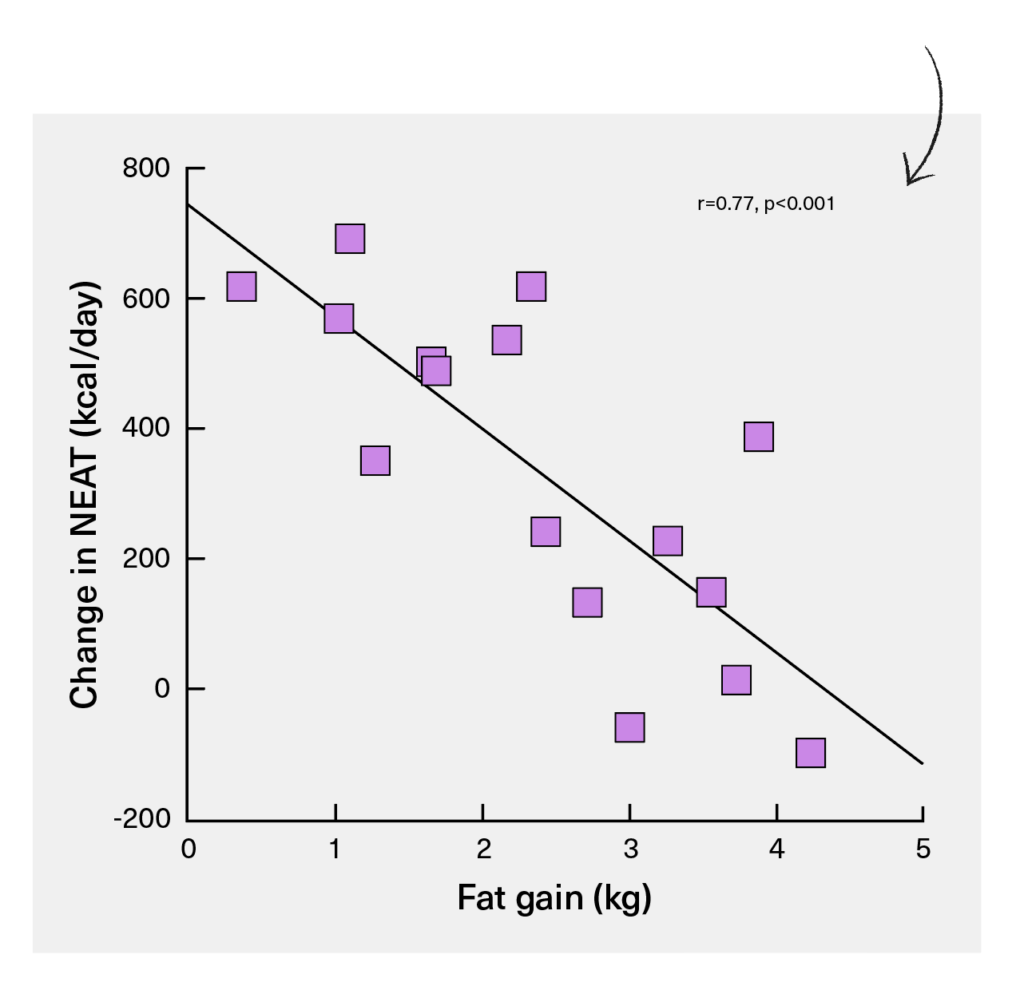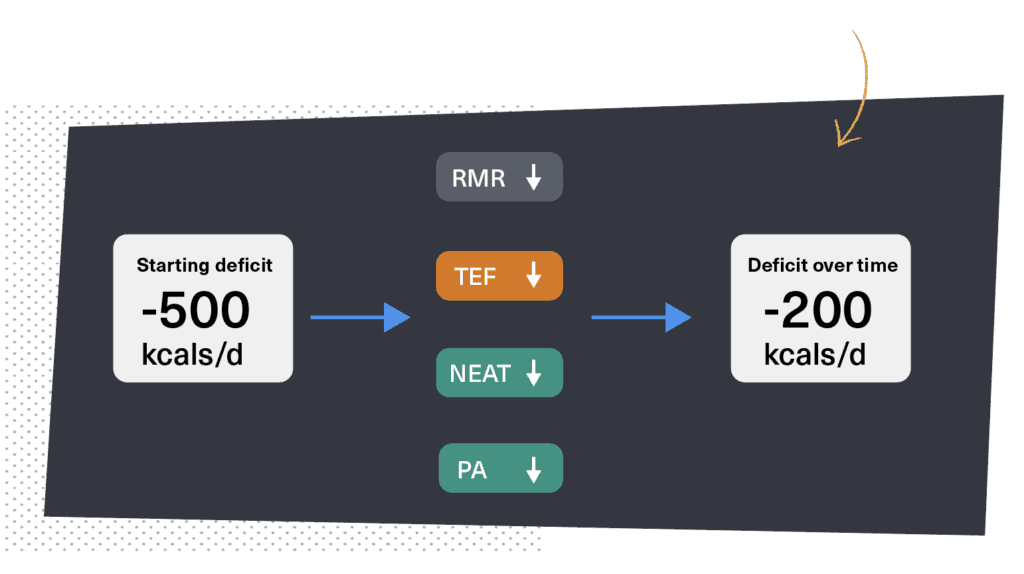This post is taken from the Vitamin. Every Thursday, I drop some knowledge bombs on your face to help you reach your goals faster while avoiding all the bullshit.
If you’ve tried losing fat or gaining muscle, you’ve probably realised it’s never a linear process; you don’t always lose or gain the amount of weight you’d expect based on your deficit or surplus.
As a result, some will claim ‘calories in/calories out’ is flawed, broken, or, my personal favourite, a myth.
The confusion stems from putting too much emphasis on ‘calories in’ and not enough on ‘calories out’.
And as you’ll see, it’s the ‘calories out’ half of the equation that complicates things. But before we get to that, let’s lay some groundwork so we’re all on the same page.
Breaking down calories in/calories out
Every day you consume food and drink (calories in). You also burn energy (calories out)––you exercise, you move around, and the body uses energy for numerous metabolic functions to keep you alive.
The balance between calories coming in and calories going out will dictate changes in energy stores.
We can represent this as:
Change in energy stores = calories in – calories out.
- If you eat more calories than you burn (calories in > calories out), you’ll gain weight over time.
- If you burn more calories than you eat (calories in < calories out), you’ll lose weight over time.
Simple enough, right? Just eat less if you want to lose weight, or eat more if you want to gain weight.
Kind of.
While the ‘calories in’ part of the equation is pretty straightforward, you eat food. The ‘calories out’ part is where things can get a bit wacky.
Myriad factors can affect how many calories you burn, and it’s because of these factors that fat loss or muscle gain is never a linear process.

To better understand why we need to understand all of the things that make up ‘calories out’.
What goes into ‘calories out’?
Three main components comprise the amount of energy you burn every day (this is also referred to as total daily energy expenditure or metabolism). I’ve discussed this in detail here, so I’ll keep this brief:
- Resting metabolic rate (RMR): This is the number of calories you burn at rest and accounts for ~60-70% of your total daily energy expenditure.
- Thermic effect of food (TEF): This is the calories burned through digestion and storage of the food you eat and accounts for 10% of your daily energy expenditure.
- Activity energy expenditure: The calories burned through activity. Notably:
- Physical activity (PA): This is intentional exercise and accounts for 10-15% of your daily energy expenditure
- Non-exercise activity thermogenesis (NEAT): All the movement you do that isn’t formal exercise falls into this bucket. Think walking, fidgeting, etc. This is the most variable component of your daily expenditure and can range from 15% in sedentary individuals to 50% in highly active individuals.
- Physical activity (PA): This is intentional exercise and accounts for 10-15% of your daily energy expenditure

As you create a deficit (or surplus), all of these components are impacted to some extent, influencing how many calories you’re actually burning.
How your energy status affects ‘calories out’
RMR–
As you lose weight, you’ll lose metabolically active tissue–like fat and muscle–likewise, when you gain weight, you’ll gain metabolically active tissue.
For instance, body fat burns about 4.5 kcals/kg (or ~2 kcals/lb), while skeletal muscle burns about 13 kcals/kg (or ~6 kcals/lb). So as you gain or lose weight, your RMR will increase or decrease.
Adaptive thermogenesis–the greater-than-expected drop in metabolic rate beyond what’s expected based on changes in fat- and fat-free mass–can also reduce your resting metabolic rate. However, this doesn’t happen to an extent worth worrying about, and it dissipates when you return to maintenance.
TEF–
As you reduce your caloric intake, the number of calories burned through TEF is also reduced. For example, if you were eating 2500 kcals during maintenance, you’d burn ~250 kcals through TEF. If you started a diet the next day and dropped calories to 1500, TEF would be reduced to 150 kcals/day.
NEAT–
Non-exercise activity thermogenesis increases with overfeeding and decreases during underfeeding. 1
But there’s a lot of individual variation here. For example, one study fed healthy participants 1000 kcals/day over their maintenance intake. 2
You’d expect them all to gain an equivalent amount of weight, right? Except they didn’t.
Some participants gained 1.4kg, while others gained 7.2kg, despite being fed the same number of calories. What caused the huge discrepancy in weight gain?
Changes in NEAT.
The participants who gained the least fat ramped up NEAT by a significant amount (up to 692 kcals/d), while some participants experienced a reduction in NEAT.

There is, at least in part, a genetic component that influences this (NEAT can be influenced by dozens of factors):
- Some people have a ‘spendthrift’ metabolism: they move more when overfed and see a lower reduction in metabolic rate with caloric restriction. These people gain the least fat when overfed and will lose fat faster when restricting calories.
- Others have a ‘thrifty’ metabolism: they don’t move as much when overfed and see the biggest drop in metabolic rate with caloric restriction. These people gain the most fat when overfed and will see slower rates of fat loss when restricting calories because they move around less. 3
Physical activity–
There will also be a drop in the number of calories you burn during exercise and general movement.
This is easy to grasp intuitively. If you weighed 200 lbs at the start of your diet and weighed 150 lbs at the end of a diet, you’ll expend less energy moving your lighter body.
But it gets trickier when you factor in energy compensation.
Physical activity can impact the total number of calories you burn. For instance, you might go for a run and burn 500 calories. But now you’re tired and move less. The 500 calories you burned during your run are offset by the lack of movement the rest of the day.
A recent study found this compensation averaged 28% but was lower in leaner individuals (29.7%) and higher in individuals with more body fat (45.7%). Moreover, the magnitude of this compensation is higher in a calorie deficit compared to maintenance or a surplus. 4 5
Piecing this together
Hopefully by now, you’re starting to see how the ‘calories out’ part of the equation can impact the size of your deficit or surplus.
You might be eating what you think is the right amount for your goal, but all the factors above could mean you’re actually eating more or less than you should be.
To help illustrate: Let’s say you start a diet and create a 500-calorie deficit. Assuming a pound of fat has 3500 calories, you expect to lose a pound per week. This may very well be the case in the early stages of a diet.
But over time, your RMR drops as you lose fat. Fewer calories are being used for digestion and storage. Energy levels dip, and you move around less, reducing your NEAT levels. You also burn fewer calories through exercise, which can be compounded by energy compensation.
So what began as a 500 kcal deficit may now only be a 200 kcal deficit, and you’re now losing 0.4 lbs/week (the reverse is generally true when you’re trying to gain muscle; energy expenditure increases, reducing the surplus and slowing down weight gain).

But this doesn’t mean ‘calories in/calories out’ doesn’t work––it means you’ve forgotten to account for the dynamic half of the equation (calories out).
When you account for both calories in and calories out, it’s not hard to see why progress can slow down or stall (assuming you’re actually paying attention to how much you’re eating and being honest about your consumption).
This is why, at some point, the diet will need to be adjusted to reestablish the deficit or surplus to kickstart progress again.
No matter how you spin it, your total caloric intake will always dictate weight gain or loss. So no, ‘calories in/calories out’ isn’t wrong or broken or a myth. It’s just a bit more nuanced than people think.
As a final note, I know several other arguments are made against calories in/calories out, like the impact of hormones and food quality vs food quantity. But this email has already blown past the word limit––so I’ll save those for another day.
Thanks for reading. If you enjoyed this, you’d love the Vitamin

95% of my new content is only being sent to my email list. One email every Thursday, filled with actionable, evidence-based fitness advice to help you with your goals. If you enjoyed this, you’d love my emails. You can learn more and subscribe for free here.